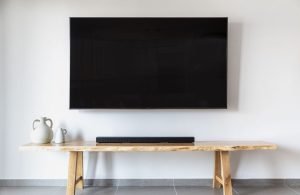Last Updated on October 30, 2025 by teamobn
An open-concept floor plan eliminates walls to create a seamless flow between spaces, making a home feel more expansive and inviting. This design maximizes natural light, enhances social interaction, and provides flexibility in layout. However, decorating an open floor plan comes with unique challenges.
Without clear room divisions, it’s essential to create defined zones while maintaining a cohesive aesthetic. Decorating an open layout starts with structure: before picking colors or rugs, map out how each zone should function and flow. For a quick primer on getting that foundation right, see these tips for creating a functional open-plan layout, which will help your seating, dining, and kitchen areas work together from day one.
Whether you’re styling a modern loft in New York City, a spacious family home in Sydney , or a cozy apartment in Montreal, the right decorating strategies can bring balance and functionality to your space.
This guide explores expert techniques to decorate an open-concept floor plan, from choosing a unified color palette to strategically placing furniture and lighting. Follow these ideas to make your space feel organized, stylish, and practical.
Contents
- 1 Methods to Create an Open-concept Floor Plan
- 1.1 Establish a Cohesive Color Palette
- 1.2 Define Spaces with Rugs and Furniture
- 1.3 Balance Open Spaces with Statement Lighting
- 1.4 Create Visual Flow with Flooring and Ceiling Details
- 1.5 Use Multifunctional and Open-Back Furniture
- 1.6 Incorporate Focal Points to Draw the Eye
- 1.7 Maintain Clear Sightlines and Traffic Flow
- 1.8 Introduce Texture and Layers for Warmth
- 1.9 Add Greenery for a Fresh, Cohesive Look
- 1.10 Maximize Storage Without Cluttering the Space
- 2 Conclusion
Methods to Create an Open-concept Floor Plan
An open-concept floor plan enhances flow, natural light, and functionality, but designing one requires careful planning. To create a space that feels both seamless and structured, use smart design choices that maintain openness while defining different areas.
Establish a Cohesive Color Palette
A well-planned color scheme brings harmony to an open-concept floor plan by creating a seamless transition between different areas. Without walls to define spaces, color plays a crucial role in maintaining visual continuity while allowing for distinct zones. Start with a neutral base color such as white, beige, gray, or soft taupe to create a unified foundation. This helps the space feel open, bright, and balanced.
Once a base color is established, introduce complementary shades throughout the space to maintain a smooth flow. Soft, warm tones such as cream, muted gold, or warm gray create an inviting and cozy ambiance. If you prefer a modern or minimalist look, cooler neutrals like crisp white, charcoal, or soft blue can enhance the openness without overwhelming the design.
To add depth and personality, incorporate accent colors strategically through furniture, textiles, and accessories. The key is to ensure accents appear in multiple areas, reinforcing cohesion without making the design feel chaotic. For example, if your kitchen features white cabinetry with marble countertops, carry these tones into the living area with matching throw pillows, area rugs, or framed artwork.
- Earthy Tones – Terracotta, deep green, mustard yellow, burnt orange
- Coastal & Cool Hues – Soft blue, navy, seafoam green, dusty teal
- Classic & Elegant – Burgundy, emerald green, charcoal gray, black
- Neutral Enhancers – Warm taupe, blush pink, soft lavender, muted gold
- Bold & Vibrant Pops – Cobalt blue, canary yellow, coral, deep plum
When selecting accent colors, consider the undertones of your base palette to ensure harmony. Warm accents like rust, gold, and beige complement warm neutrals, while cool tones such as navy, icy gray, and sage work well with cooler foundations.
Layering these shades across wall paint, upholstery, curtains, decorative pillows, rugs, and accessories helps reinforce a connected look. A well-balanced palette prevents an open-concept floor plan from feeling disjointed, ensuring a stylish and cohesive design.
Define Spaces with Rugs and Furniture
Each area should serve a distinct function, even in an open-concept floor plan. Rugs are an effective way to mark specific zones without using walls. A large area rug under the dining table grounds the eating space, while a plush rug in the seating area creates a cozy ambience.
Use furniture placement to establish boundaries further, position a sectional sofa to subtly separate the living room from the kitchen or place a console table behind the couch to delineate spaces. Open-back shelving units can function as room dividers while maintaining an airy feel.
Strategic furniture arrangement ensures that each part of the space remains defined while contributing to the overall aesthetic of the open-concept floor plan.
Working with a compact footprint? Many of the same zoning and flow principles apply at a smaller scale. If you’re optimizing a single-room home, explore these studio apartment layout ideas for smart ways to carve out living, sleeping, and dining zones without adding walls.
Balance Open Spaces with Statement Lighting
Lighting is crucial in defining different areas within an open-concept floor plan. Instead of relying on a single light source, use layered lighting to create a distinction between spaces while maintaining a cohesive look. Pendant lights over the kitchen island signal a functional work area, while a chandelier above the dining table establishes an intimate setting for meals. Floor lamps and table lamps in the living room add warmth and make the space feel more inviting.
Choose lighting fixtures with complementary finishes or designs that connect different zones to maintain harmony. For example, a similar chandelier in the dining area can echo black metal pendant lights in the kitchen. Using a mix of ambient, task, and accent lighting helps define each section while preserving the openness of the space.
Create Visual Flow with Flooring and Ceiling Details
Consistent flooring is one of the easiest ways to unify an open-concept floor plan. Using the same material—hardwood, tile, or polished concrete—across all areas creates a seamless transition from one space to another. If switching materials is necessary, use subtle transitions like a decorative tile border or a plank direction change to mark different zones without disrupting continuity. Ceiling details can also enhance visual flow and define spaces. Exposed beams running through the entire space add architectural interest while unifying the design.
A coffered ceiling in the living area or wood panelling in the dining section creates subtle separation without needing walls. Extend the materials used in one space into another for an even more cohesive effect, such as carrying the kitchen’s backsplash tile into a bar area or breakfast nook. These details help maintain an open-concept floor plan’s airy, connected feel while giving each section a distinct identity.
Use Multifunctional and Open-Back Furniture
Furniture selection plays a key role in keeping an open-concept floor plan both functional and visually appealing. Instead of bulky, closed-off pieces, opt for multifunctional furniture that enhances flexibility while maintaining an open feel. Open-back shelving units are subtle dividers between living and dining areas without blocking light or sightlines.
A console table behind a sofa provides storage and helps define the living space while keeping it connected to the rest of the room. With built-in storage or nesting tables, Ottomans offer additional functionality without overwhelming the space. Choosing versatile furniture allows different areas to feel distinct while preserving the flow of an open floor plan.
Incorporate Focal Points to Draw the Eye
In an open-concept floor plan, defining each space with a focal point ensures that the design remains visually engaging. A fireplace, accent wall, or statement artwork can anchor the living area, while a bold light fixture or unique dining table creates a focal point in the eating space.
Kitchens can benefit from eye-catching elements like a stylish backsplash, a statement range hood, or elegant pendant lighting. Incorporating distinct focal points in each zone prevents the space from feeling monotonous and helps guide the eye through the open layout. To maintain cohesion, ensure that each focal point complements the surrounding design elements, such as matching metal finishes or using similar color tones throughout.
Maintain Clear Sightlines and Traffic Flow
One of the main advantages of an open-concept floor plan is the seamless connection between spaces, which can be compromised if furniture and decor obstruct movement. Clear pathways by ensuring walkways are at least 36 inches wide, allowing for comfortable traffic flow. Avoid placing oversized furniture in high-traffic areas, and be mindful of where hanging light fixtures and shelving are positioned to prevent visual clutter.
Define Clear Walkways
- Ensure pathways are at least 36 inches wide for comfortable movement. In high-traffic areas, such as between the kitchen and dining space, aim for 42–48 inches to allow multiple people to pass through easily.
- Keep major walkways unobstructed by furniture, rugs, or decorative elements that could create a bottleneck.
- Arrange seating areas so that guests and residents can move freely around them without squeezing between pieces.
Position Furniture Strategically
- Float furniture away from walls to create natural walking paths. For example, positioning a sectional sofa in the living area with enough clearance behind it helps maintain openness.
- Use low-profile furniture, such as benches or open shelving, instead of bulky cabinets that block views and light.
- Ensure dining tables have ample space around them for chairs to be pulled out without disrupting movement.
Optimize Lighting for Visibility
- Use layered lighting to illuminate pathways and prevent dark corners that can make a space feel cramped.
- Avoid low-hanging light fixtures in walkways that could obstruct sightlines or create visual clutter. Instead, opt for recessed lighting, wall sconces, or slim-profile pendants.
- If using pendant lights over a kitchen island or dining table, ensure they are positioned high enough to allow a clear view across the room.
Maintaining clear sightlines between the kitchen, dining, and living areas enhances the feeling of openness and makes entertaining more enjoyable. Thoughtful furniture placement and minimal obstructions ensure the space remains airy, inviting, and easy to navigate.
Introduce Texture and Layers for Warmth
An open-concept floor plan can sometimes feel too expansive or impersonal, but adding texture and layering different materials helps create warmth and dimension. Incorporate a mix of wood, metal, glass, and fabric materials to give the space depth and character.
A plush area rug in the living room, woven baskets for storage, and textured throw pillows on the sofa all contribute to a cozy and inviting atmosphere. Upholstered dining chairs, velvet curtains, or a wood-paneled accent wall can further enhance comfort. Layering textures prevents the space from feeling flat while adding a lived-in, welcoming touch to your open layout.
Add Greenery for a Fresh, Cohesive Look
Plants are an easy and effective way to tie together different areas of an open-concept floor plan while adding natural beauty. Large potted plants, such as fiddle leaf figs or snake plants, can help define spaces while maintaining an open, airy feel. Smaller plants on shelves, countertops, or side tables add continuity across the living, dining, and kitchen areas.
Hanging planters or vertical gardens can create subtle divisions without obstructing sightlines. Greenery enhances your space’s aesthetic appeal and improves indoor air quality, making your home feel fresher and more inviting.
Maximize Storage Without Cluttering the Space
Storage is often challenging in an open-concept floor plan, where fewer walls mean fewer built-in storage options. To keep essentials organised, incorporate furniture with hidden storage, such as coffee tables with compartments, storage benches, or ottomans with lift-up lids.
Built-in shelving along walls can provide a functional yet stylish solution for displaying books, decor, and everyday items. To maintain a clean and uncluttered look, use decorative baskets and bins to store small items while keeping them easily accessible. Opting for sleek, space-saving storage solutions ensures that your home stays tidy without disrupting the openness of the floor plan.
Conclusion
Creating an open-concept floor plan requires a balance of cohesion, functionality, and thoughtful design choices. You can maintain openness while defining individual spaces by using a consistent color palette, strategic furniture placement, and clear traffic flow. With the right approach, your home will feel spacious, inviting, and effortlessly connected, enhancing both aesthetics and everyday living.
We have more guides to boost the look of your interior space. Check out our budget solutions to improving your living room.






